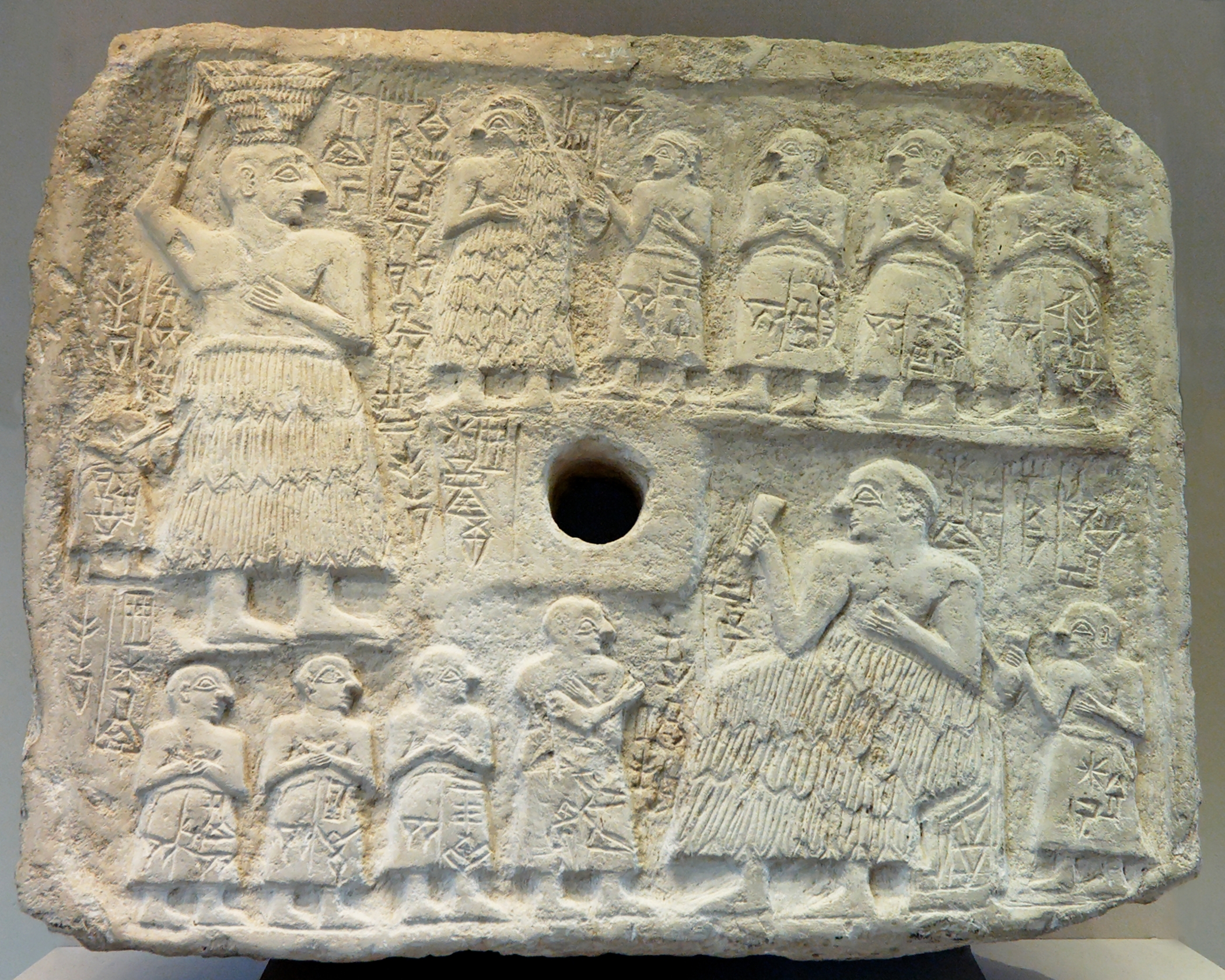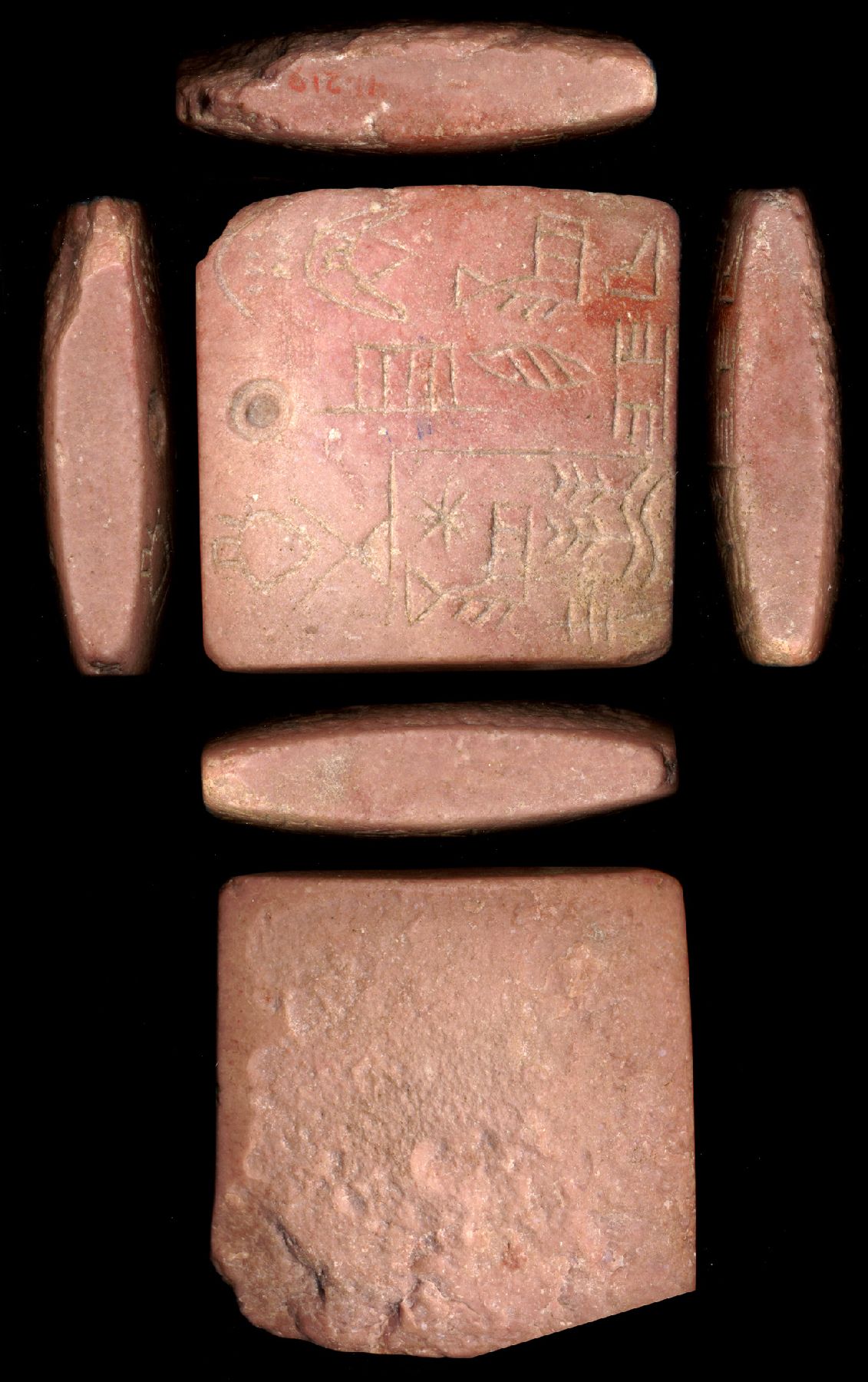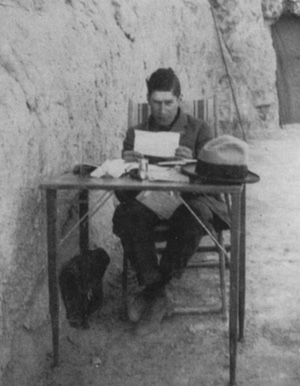|
Shulsaga
Shulshaga (Šulšaga) or Shulsagana (Šulšagana) was a Mesopotamian god. He was a part of the state pantheon of the city-state of Lagash. His name means "youth of his heart" in Sumerian, with the possessive pronoun possibly referring to Shulshaga's father, Ningirsu. While direct references to the lineage of deities are rare in sources from the Early Dynastic period, it is certain that Shulshaga was viewed as the eldest son of Ningirsu and his wife Bau, and as the older brother of Igalim. One inscription refers to Shulshaga and Igalim as "beloved children of Ningirsu." They received an equal amount of offerings according to documents from Early Dynastic Lagash. Several rulers of Lagash were devoted to Shulshaga. Ur-Nanshe built a statue of him. Urukagina mentions building temples to multiple deities of Lagash, including Shulsaga, as well as his parents, brother, as well as Hegir, Bau's Lamma and Ninmu. Said temple bore the name ''(E-)tuš-akkil-li''. One inscription of Gudea ... [...More Info...] [...Related Items...] OR: [Wikipedia] [Google] [Baidu] |
Zababa
Zababa (, ''dza-ba4-ba4'', ) was a Mesopotamian god. He was the tutelary deity of the city of Kish and was regarded as a god of war. He was initially seen as a son of Enlil, though in Assyria during the reign of Sennacherib, he started to be viewed as a son of Ashur instead. The goddess Bau came to be viewed as his wife after her introduction to Kish in the Old Babylonian period. The worship of Zababa is first documented in sources from the Early Dynastic period, including texts from both Kish and other cities in Mesopotamia, for example the '' Zame Hymns'' from Abu Salabikh. His importance declined in the Sargonic and Ur III period, but he regained a more prominent position in the Old Babylonian period. Through the first millennium BCE he was worshiped both in Babylonia and in Assyria. No myths focused on Zababa are known, though he is referenced in an UD.GAL.NUN composition about the construction of Enlil's temple, in a number of legends about rulers of the Akkadia ... [...More Info...] [...Related Items...] OR: [Wikipedia] [Google] [Baidu] |
List Of Mesopotamian Deities
Deities in ancient Mesopotamia were almost exclusively Anthropomorphism, anthropomorphic. They were thought to possess extraordinary powers and were often envisioned as being of tremendous physical size. The deities typically wore ''melam'', an ambiguous substance which "covered them in terrifying splendor" and which could also be worn by heroes, kings, giants, and even demons. The effect that seeing a deity's ''melam'' has on a human is described as ''ni'', a word for the "Paresthesia, physical creeping of the flesh". Both the Sumerian language, Sumerian and Akkadian languages contain many words to express the sensation of ''ni'', including the word ''puluhtu'', meaning "fear". Deities were almost always depicted wearing horned caps, consisting of up to seven superimposed pairs of ox-horns. They were also sometimes depicted wearing clothes with elaborate decorative gold and silver ornaments sewn into them. The ancient Mesopotamians believed that their deities lived in Heaven, ... [...More Info...] [...Related Items...] OR: [Wikipedia] [Google] [Baidu] |
Lagash
Lagash (; cuneiform: LAGAŠKI; Sumerian language, Sumerian: ''Lagaš'') was an ancient city-state located northwest of the junction of the Euphrates and Tigris rivers and east of Uruk, about east of the modern town of Al-Shatrah, Iraq. Lagash (modern Al-Hiba in Dhi Qar Governorate) was one of the oldest cities of the Ancient Near East. The ancient site of Nina (Tell Zurghul) is around away and marks the southern limit of the state. Nearby Girsu (modern Telloh), about northwest of Lagash, was the religious center of the Lagash state. The Lagash state's main temple was the E-ninnu at Girsu, dedicated to the god Ningirsu. The Lagash state incorporated the ancient cities of Lagash, Girsu, Nina. History Though some Uruk period pottery shards were found in a surface survey, significant occupation at the site of Lagash began early in the 3rd Millennium BC, in the Early Dynastic Period (Mesopotamia), Early Dynastic I period (c. 2900–2600 BC), surface surveys and excavations show tha ... [...More Info...] [...Related Items...] OR: [Wikipedia] [Google] [Baidu] |
Sumerian Language
Sumerian ) was the language of ancient Sumer. It is one of the List of languages by first written account, oldest attested languages, dating back to at least 2900 BC. It is a local language isolate that was spoken in ancient Mesopotamia, in the area that is modern-day Iraq, Iraq. Akkadian language, Akkadian, a Semitic languages, Semitic language, gradually replaced Sumerian as the primary spoken language in the area (the exact date is debated), but Sumerian continued to be used as a sacred, ceremonial, literary, and scientific language in Akkadian-speaking Mesopotamian states, such as Assyria and Babylonia, until the 1st century AD. Thereafter, it seems to have fallen into obscurity until the 19th century, when Assyriologists began Decipherment, deciphering the cuneiform inscriptions and excavated tablets that had been left by its speakers. In spite of its extinction, Sumerian exerted a significant influence on the languages of the area. The Cuneiform, cuneiform script, original ... [...More Info...] [...Related Items...] OR: [Wikipedia] [Google] [Baidu] |
Ningirsu
Ninĝirsu was a Mesopotamia, Mesopotamian god regarded as the tutelary deity of the city of Girsu, Ĝirsu, and as the chief god of the local pantheon of the state of Lagash. He shares many aspects with the god Ninurta. Ninĝirsu was identified as a local Hypostasis (philosophy and religion), hypostasis of Ninurta in a syncretism that is documented at the latest by the time of Gudea in the late third millennium BC. Assyriology, Assyriologists are divided on the question of whether they were originally two manifestations of the same god, or two separate deities. Ninĝirsu's two main aspects were that of a warlike god, and that of a god connected with agricultural fertility. In Lagash, he was particularly associated with a composite emblem depicting the Anzû bird over two lions. It could sometimes represent him in cultic contexts. Ninĝirsu was an important local god from the Early Dynastic Period (Mesopotamia), Early Dynastic Period until the Old Babylonian Empire, old Babylonian p ... [...More Info...] [...Related Items...] OR: [Wikipedia] [Google] [Baidu] |
Early Dynastic Period (Mesopotamia)
The Early Dynastic Period (abbreviated ED Period or ED) is an archaeological culture in Mesopotamia (modern-day Iraq) that is generally dated to and was preceded by the Uruk and Jemdet Nasr periods. It saw the development of writing and the formation of the first cities and states. The ED itself was characterized by the existence of multiple city-states: small states with a relatively simple structure that developed and solidified over time. This development ultimately led, directly after this period, to broad Mesopotamian unification under the rule of Sargon, the first monarch of the Akkadian Empire. Despite their political fragmentation, the ED city-states shared a relatively homogeneous material culture. Sumerian cities such as Uruk, Ur, Lagash, Umma, and Nippur located in Lower Mesopotamia were very powerful and influential. To the north and west stretched states centered on cities such as Kish, Mari, Nagar, and Ebla. The study of Central and Lower Mesopotamia has l ... [...More Info...] [...Related Items...] OR: [Wikipedia] [Google] [Baidu] |
Bau (goddess)
Bau (cuneiform: 𒀭𒁀𒌑 ''dingir, dBa-U2''; also romanized as Baba or Babu) was a Mesopotamian goddess. The reading of her name is a subject of debate among researchers, though Bau is considered the conventional spelling today. While initially regarded simply as a life-giving deity, in some cases associated with the creation of mankind, over the course of the third and second millennia BCE she also acquired the role of a healing goddess. She could be described as a divine midwife. In art she could be depicted in the company of waterfowl or scorpions. In sources from Lagash and Girsu, Bau's husband was the god Ningirsu. Among their children were deities such as Igalim, Shulshaga and Ḫegir. While they could still be regarded as a couple in later sources, from the Old Babylonian period onwards Bau was also viewed as the wife of Zababa, the tutelary god of Kish (Sumer), Kish. Another deity associated with her was her attendant goddess Lammašaga. Most likely for political reas ... [...More Info...] [...Related Items...] OR: [Wikipedia] [Google] [Baidu] |
Igalim
Igalim () or Igalimma () was a Mesopotamian god from the local pantheon of the state of Lagash. He was closely associated with Ningirsu, possibly originating as the personification of the door of his temple, and was regarded as a member of his family. His older brother was Shulshaga and his mother was Bau, as already attested in Early Dynastic sources. Until the end of the Ur III period he was worshiped in Lagash and Girsu, where he had a temple, though he also appears in a number of later texts. Name and character The consensus view is that Igalima's name can be translated as "door of the bison". He functioned as the divine gatekeeper of the E-ninnu, "house of fifty" (also known as E-ninnu-Anzû-babbar, "house of fifty white Anzû birds"), the temple of Ningirsu in Girsu. It has been proposed that he was originally the personification of its gate, and the cuneiform sign ''alim'' ("bison") in his name metaphorically referred to Ningirsu, rather than to a real animal. An inscr ... [...More Info...] [...Related Items...] OR: [Wikipedia] [Google] [Baidu] |
Ur-Nanshe
Ur-Nanshe (, ; ) also Ur-Nina, was the first king of the First Dynasty of Lagash in the Sumerian Early Dynastic Period III. He is known through inscriptions to have commissioned many building projects, including canals and temples, in the state of Lagash,Louvre Pouysségur, Patrick , ed. "Perforated Relief of King Ur-Nanshe." Louvre Museum. Louvre Museum. Web. 13 Mar 2013. and defending Lagash from its rival state Umma.CDLI Wiki University of Oxford, 14 Jan 2010. Web. 13 Mar 2013. He was probably not from royal lineage, being the son of Gunidu () who was recorded without an accompanying royal title. He was the father of Ak ... [...More Info...] [...Related Items...] OR: [Wikipedia] [Google] [Baidu] |
Urukagina
Uru-ka-gina, Uru-inim-gina, or Iri-ka-gina ( ; died 2370 BC) was King of the city-states of Lagash and Girsu in Mesopotamia, and the last ruler of the 1st Dynasty of Lagash. He assumed the title of king, claiming to have been divinely appointed, upon the downfall of his corrupt predecessor, Lugalanda. He is best known for his reforms to combat corruption, which are sometimes cited as the first example of a legal code in recorded history. Although the actual text has not been discovered, much of its content may be surmised from other references to it that have been found. In it, he exempted widows and orphans from taxes; compelled the city to pay funeral expenses (including the ritual food and drink libations for the journey of the dead into the lower world); and decreed that the rich must use silver when purchasing from the poor, and if the poor does not wish to sell, the powerful man (the rich man or the priest) cannot force him to do so. He also participated in several con ... [...More Info...] [...Related Items...] OR: [Wikipedia] [Google] [Baidu] |
Lamassu
''Lama'', ''Lamma'', or ''Lamassu'' (Cuneiform: , ; Sumerian language, Sumerian: lammař; later in Akkadian language, Akkadian: ''lamassu''; sometimes called a ''lamassuse'') is an Mesopotamia, Assyrian protective deity. Initially depicted as a goddess in Sumerian times, when it was called ''Lamma'', it was later depicted from Assyrian times as a hybrid of a human, bird, and either a bull or lion—specifically having a human head, the body of a bull or a lion, and bird wings, under the name ''Lamassu''. In some writings, it is portrayed to represent a goddess. A less frequently used name is ''shedu'' (Cuneiform: , ; Sumerian: alad; Akkadian, ''šēdu''), which refers to the male counterpart of a ''lamassu''. ''Lamassu'' represent the zodiacs, parent-stars or constellations. Goddess Lama The goddess Lama appears initially as a mediating goddess who precedes the orans and presents them to the deities. The protective deity is clearly labelled as Lam(m)a in a Kassites, Kassite st ... [...More Info...] [...Related Items...] OR: [Wikipedia] [Google] [Baidu] |
Gudea
Gudea ( Sumerian: , ''Gu3-de2-a''; died 2124 BC) was a Sumerian ruler ('' ensi'') of the state of Lagash in Southern Mesopotamia, who ruled –2060 BC ( short chronology) or 2144–2124 BC ( middle chronology). He probably did not come from the city, but had married Ninalla, daughter of the ruler Ur-Baba (2164–2144 BC) of Lagash, thus gaining entrance to the royal house of Lagash. He was succeeded by his son Ur-Ningirsu II. Gudea ruled at a time when the center of Sumer was still ruled by the Gutian dynasty, and when the Akkadian king Ishtup-Ilum ruled to the north in Mari. Under Gudea, Lagash had a golden age, and seemed to enjoy a high level of independence from the Gutians, a language isolate speaking people who had arrived from regions to the northeast of Mesopotamia. Inscriptions Gudea chose the title of ''énsi'' (town-king or governor), not the more exalted ( Akkadian ''šarrum''). Gudea did not style himself "god of Lagash" as he was not deified during his own ... [...More Info...] [...Related Items...] OR: [Wikipedia] [Google] [Baidu] |







